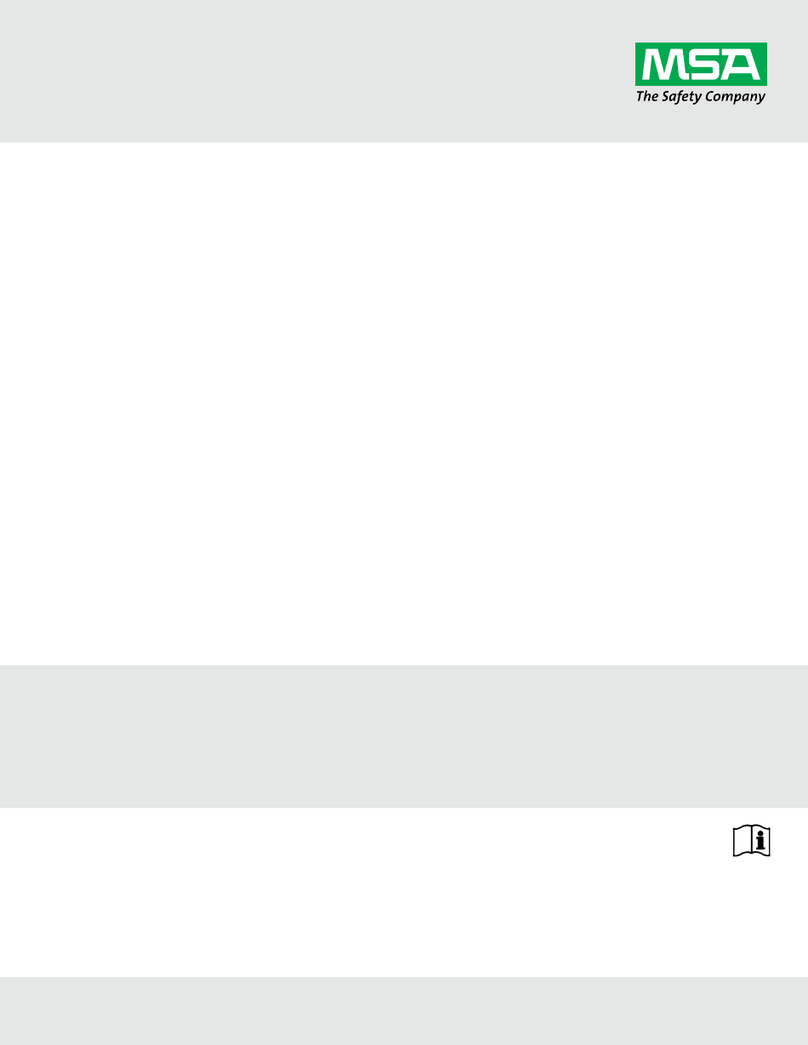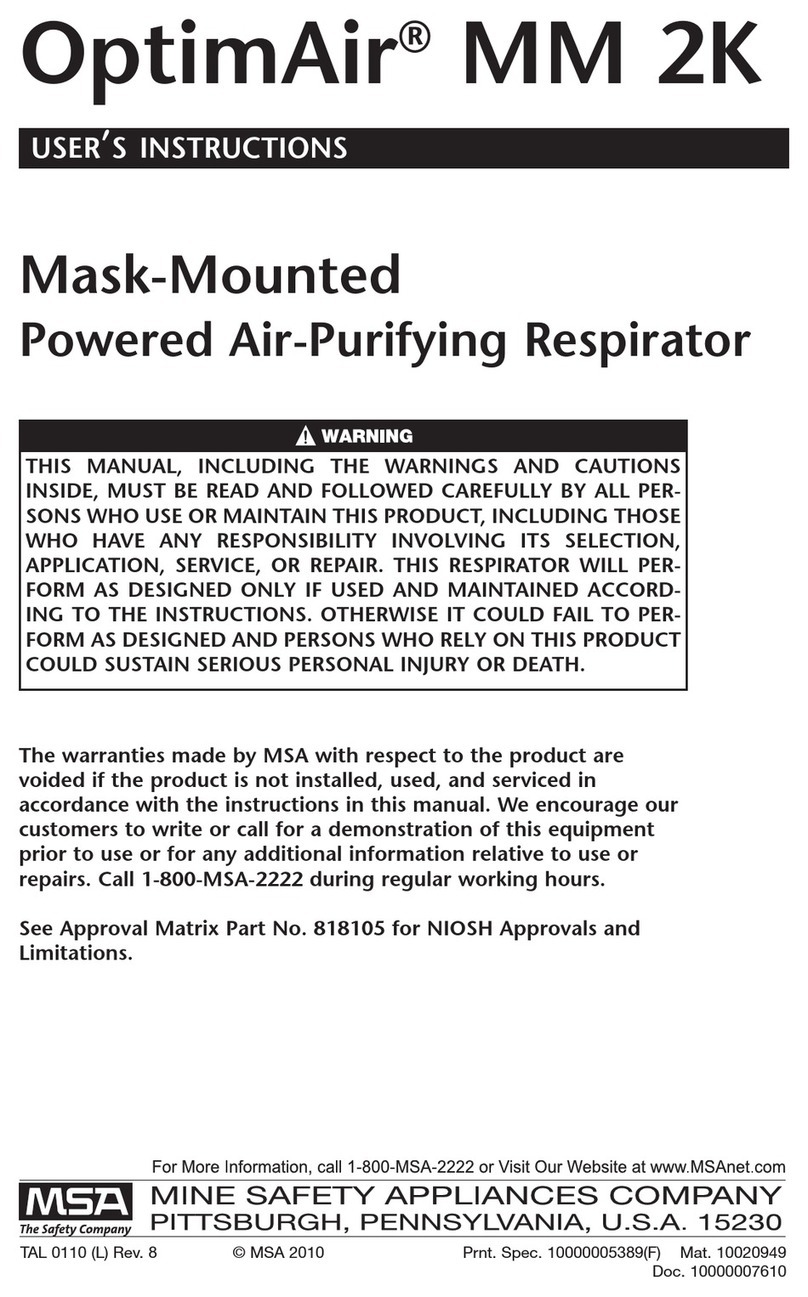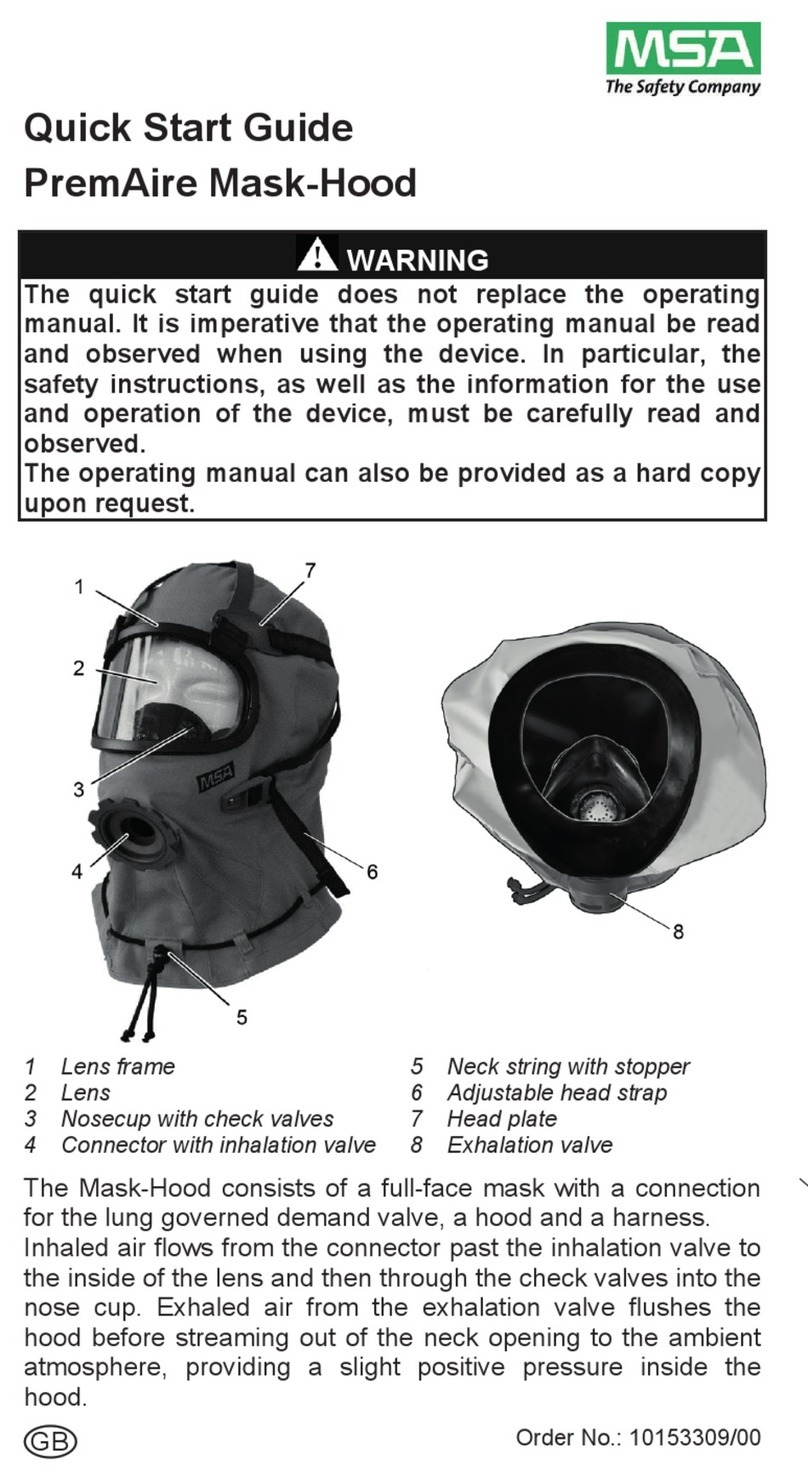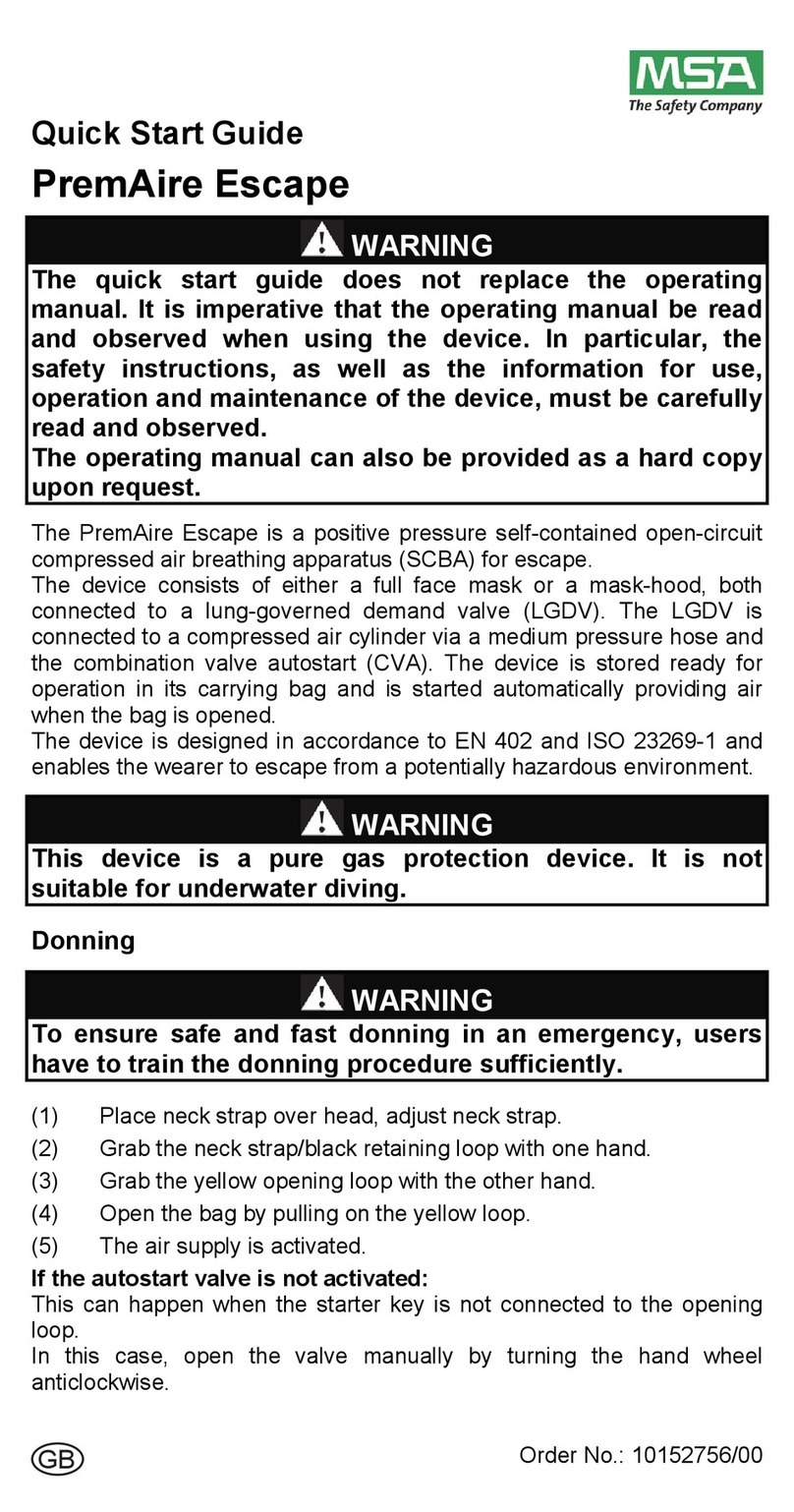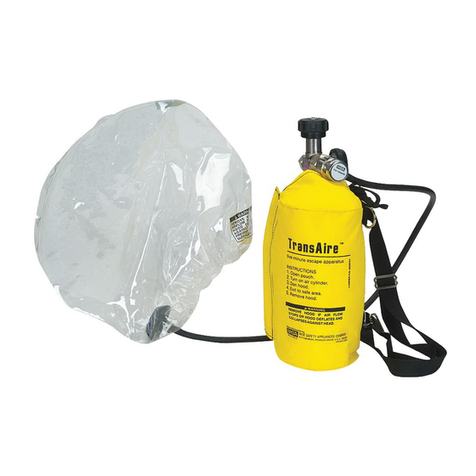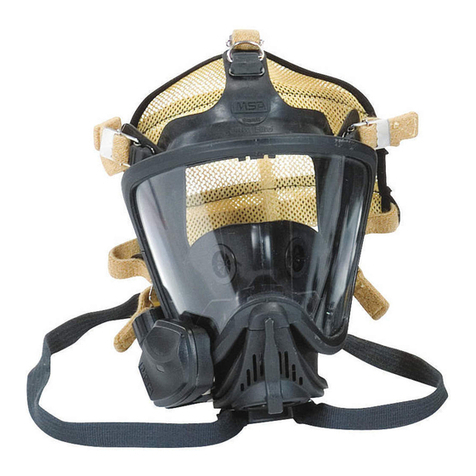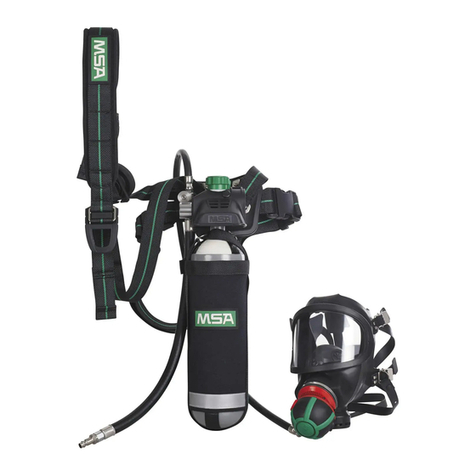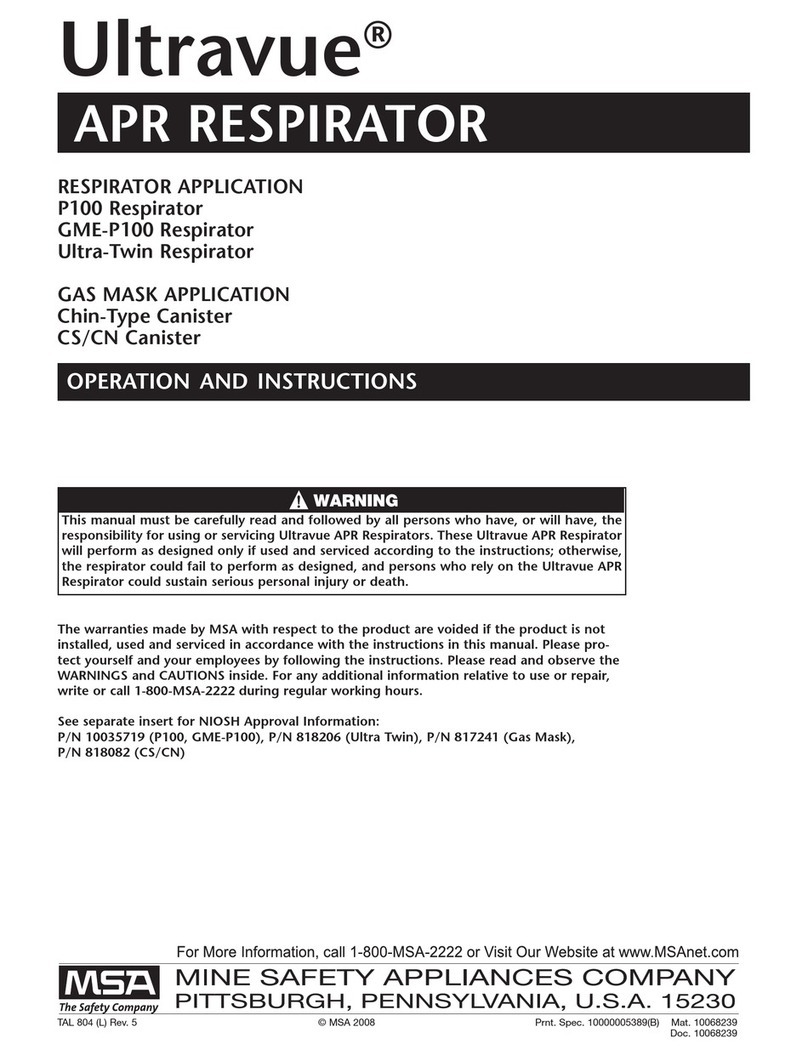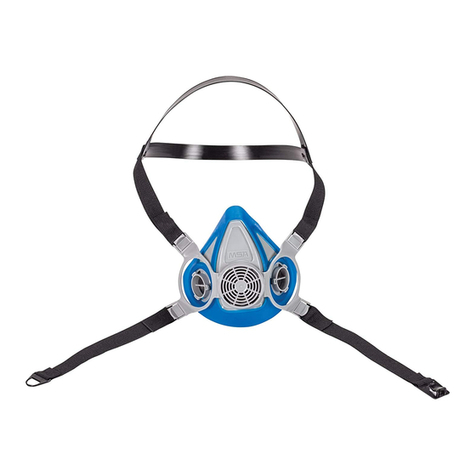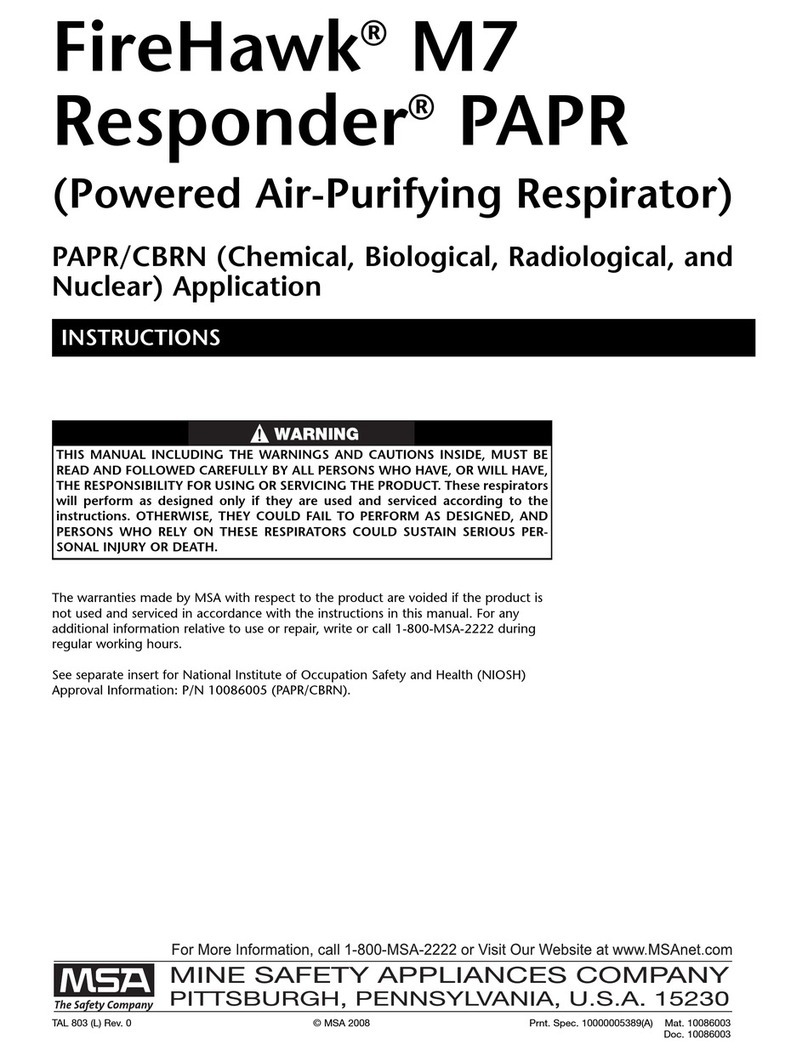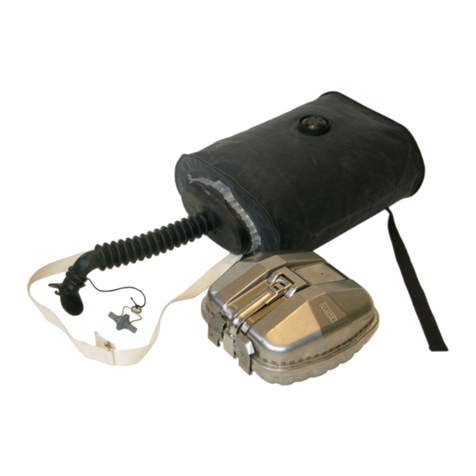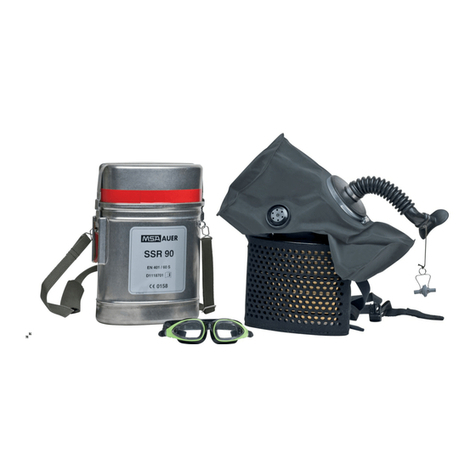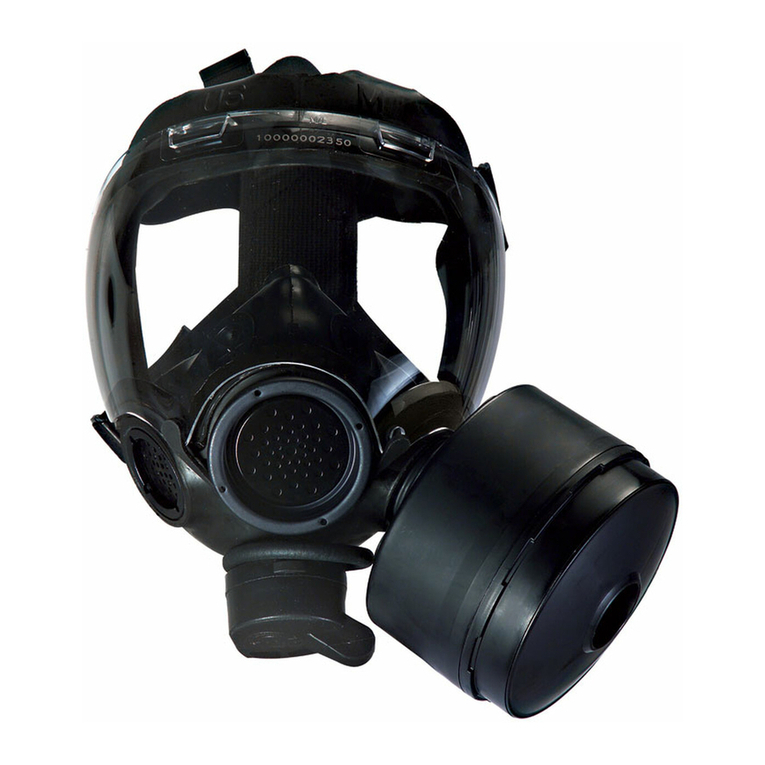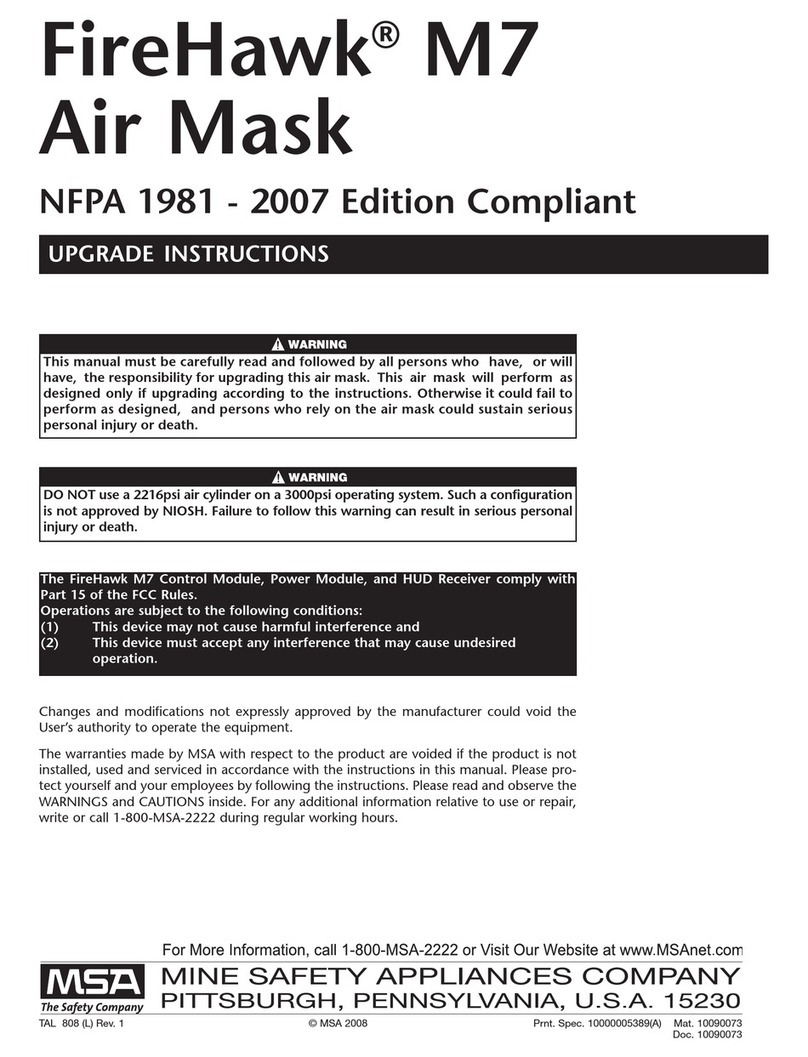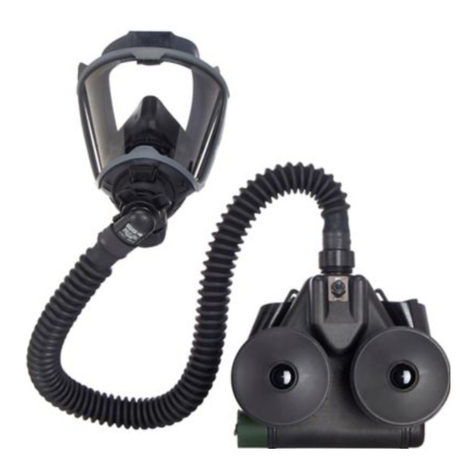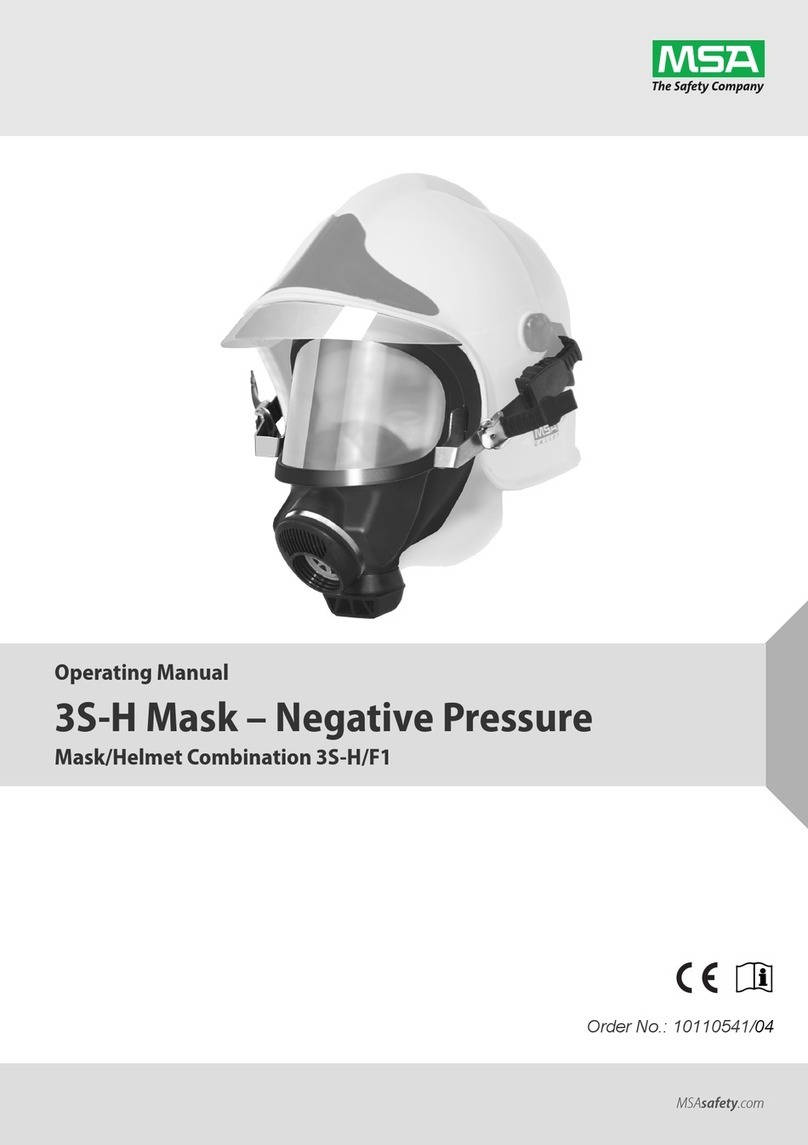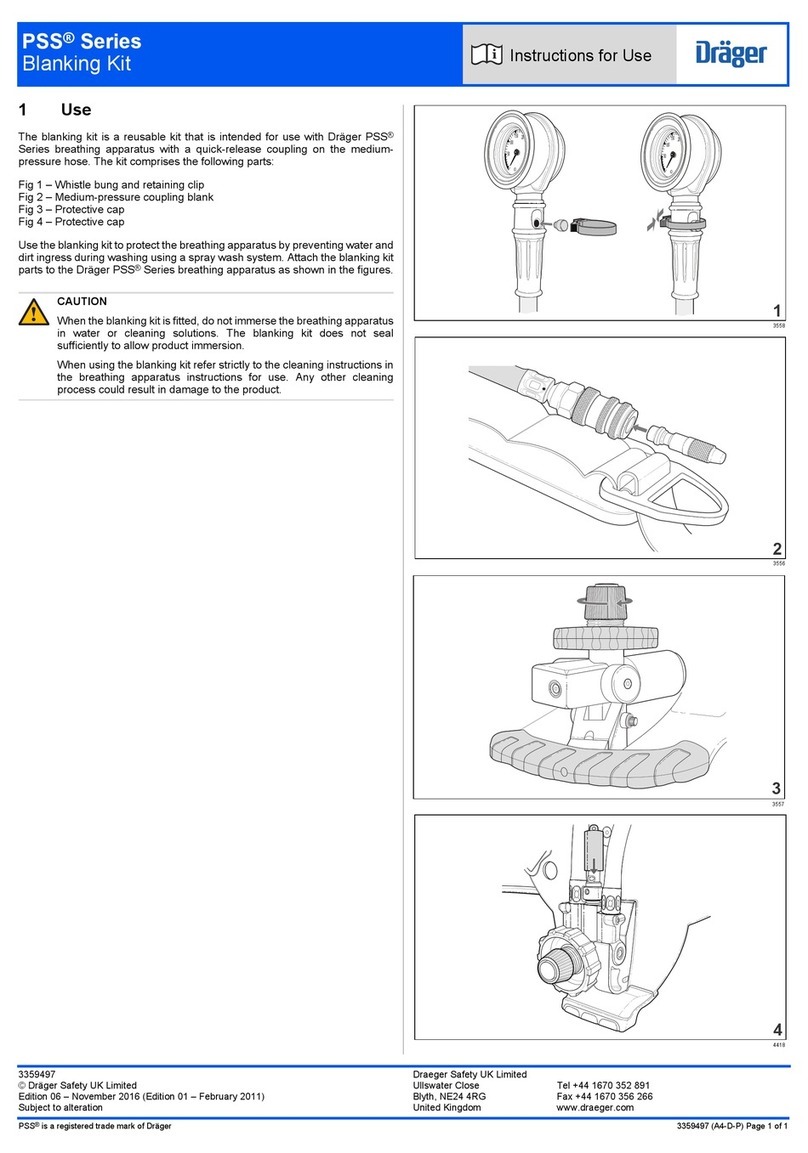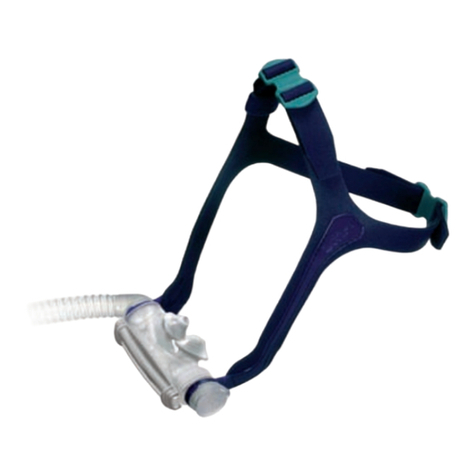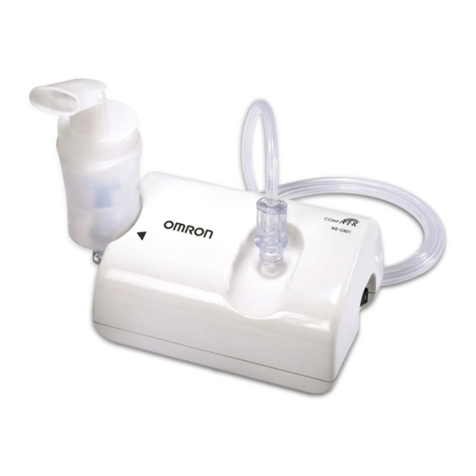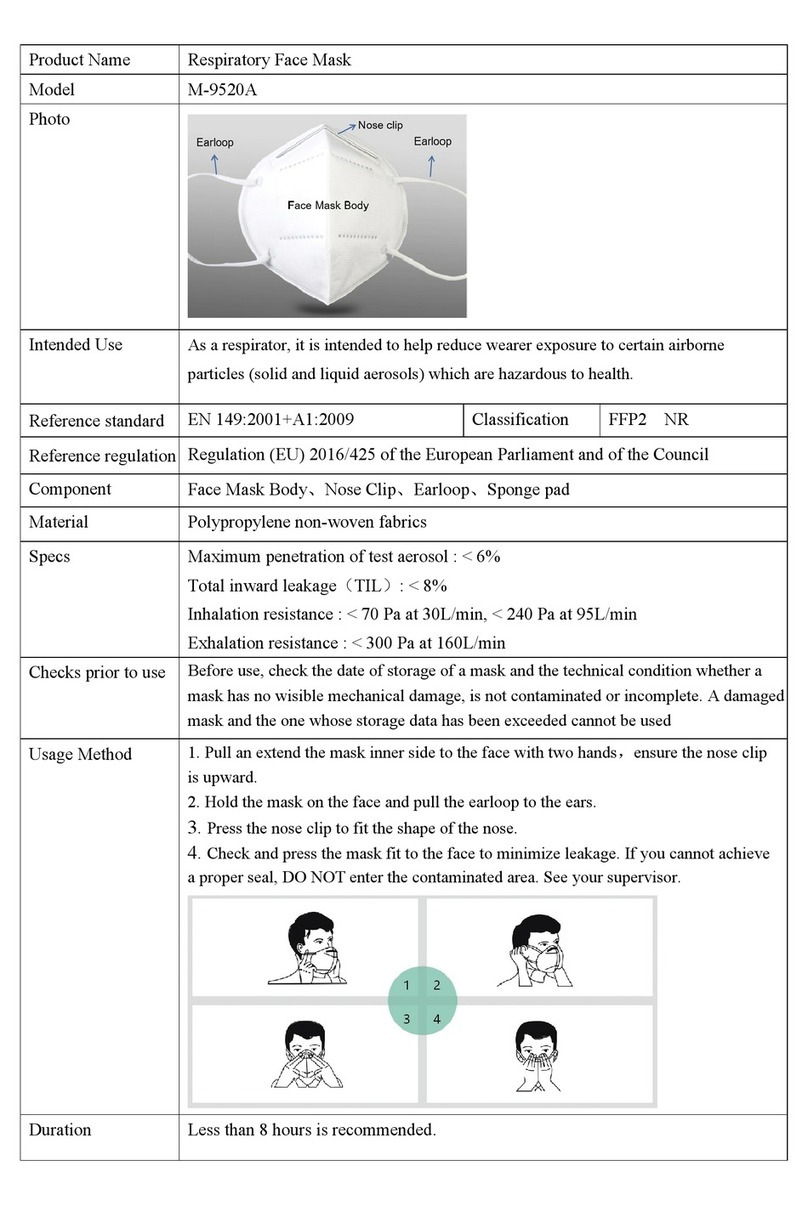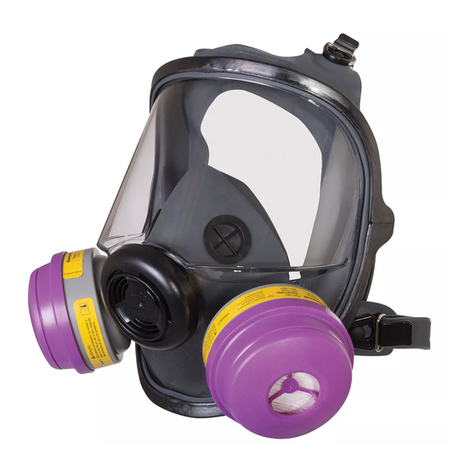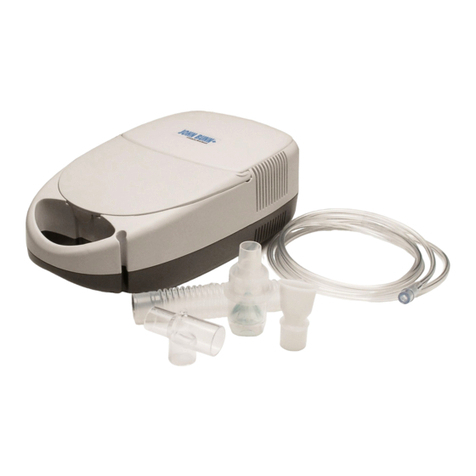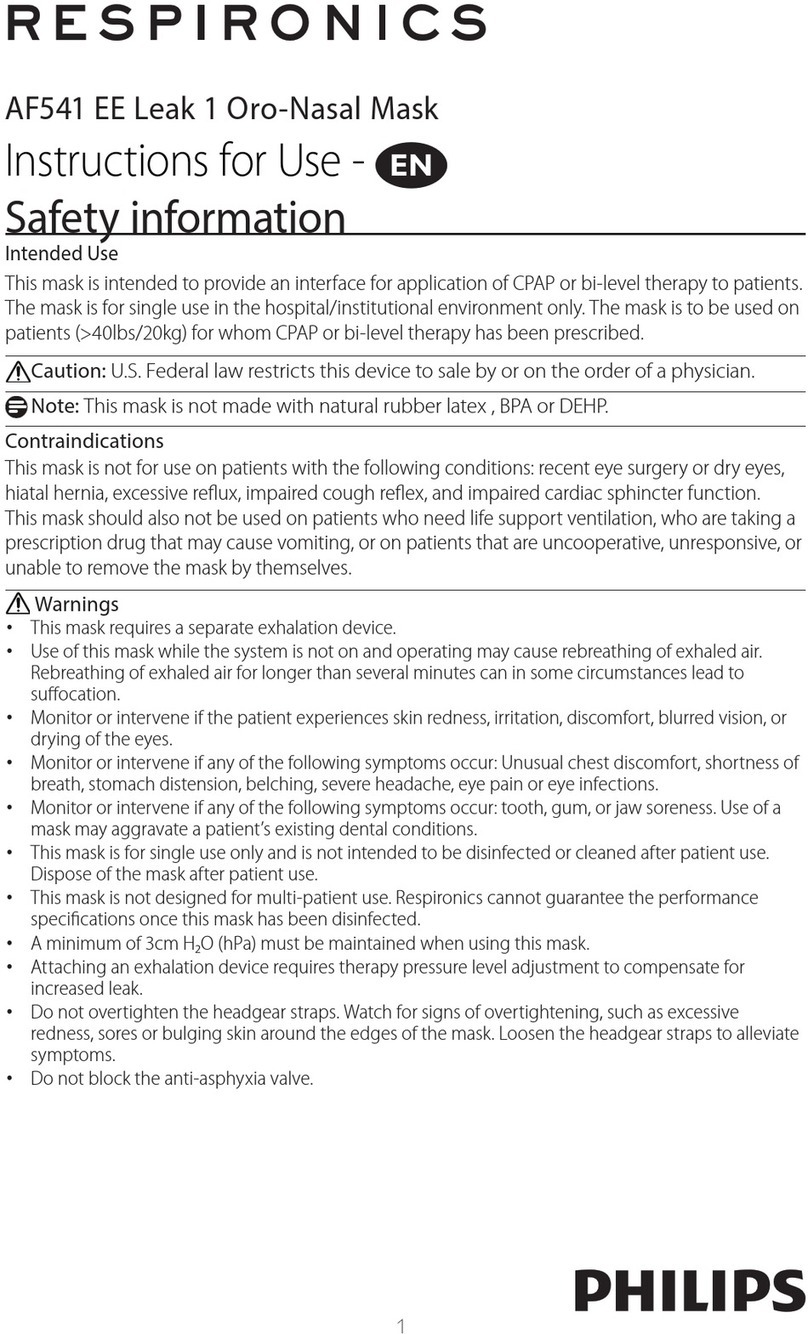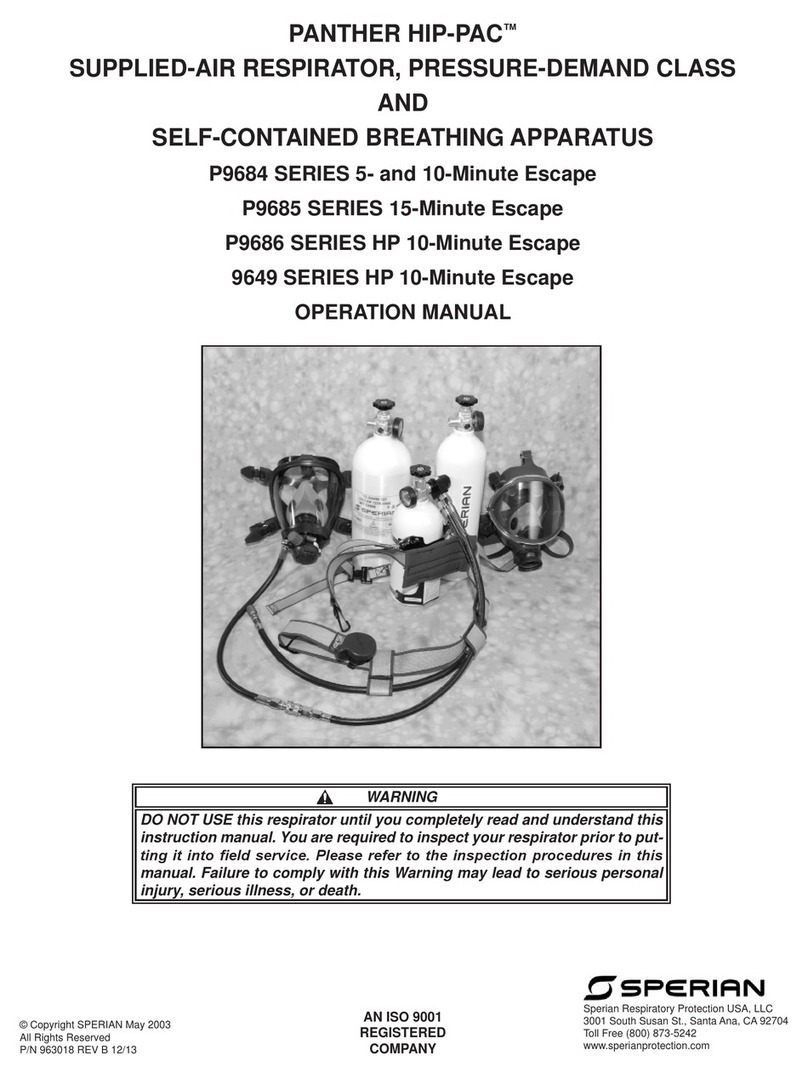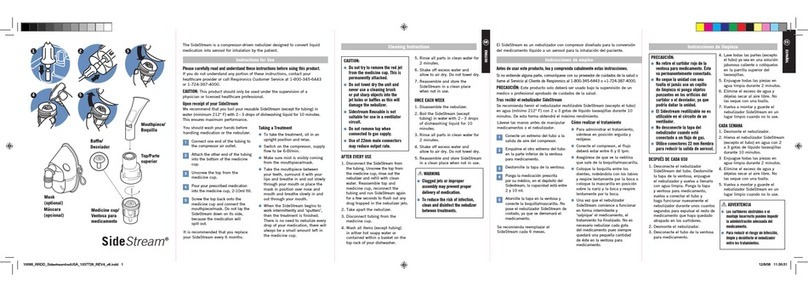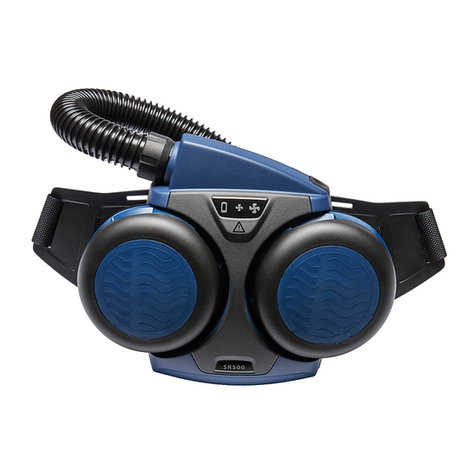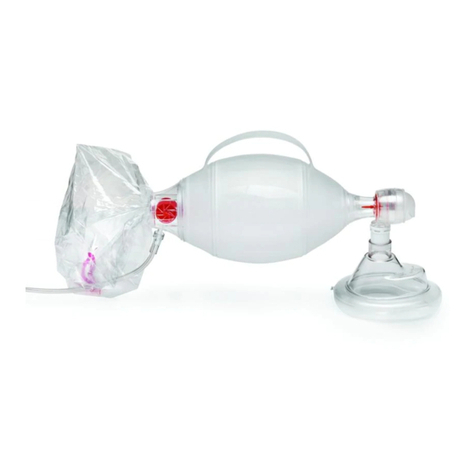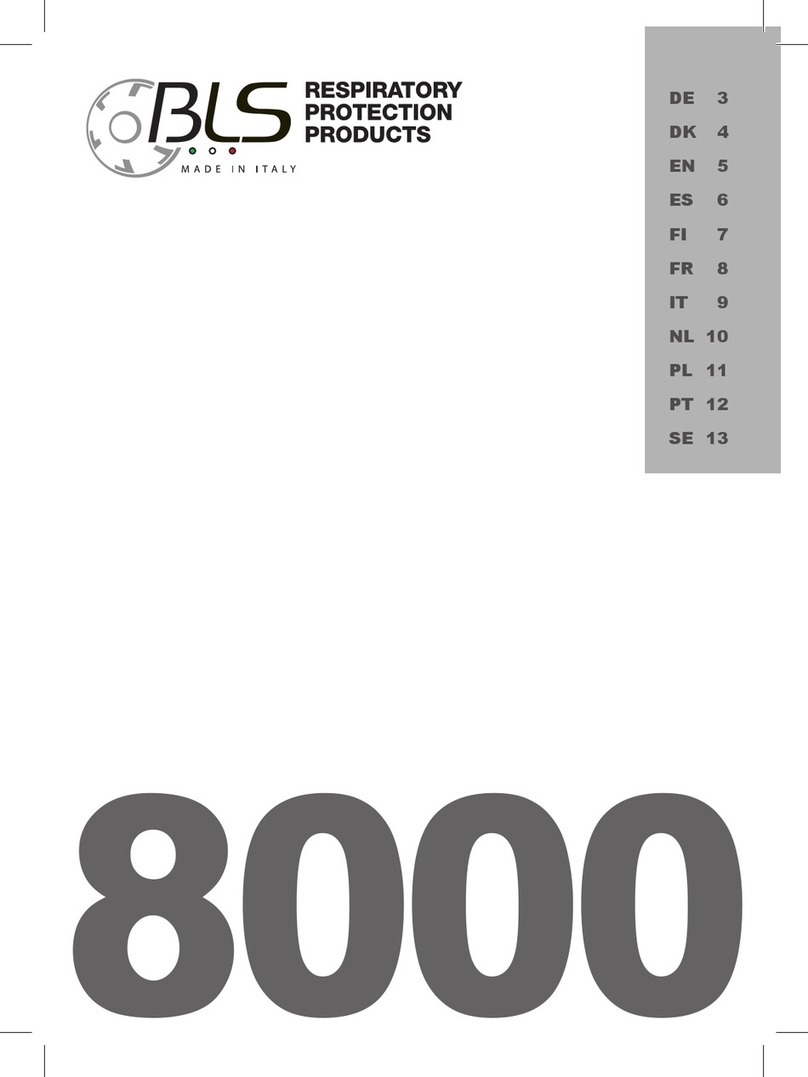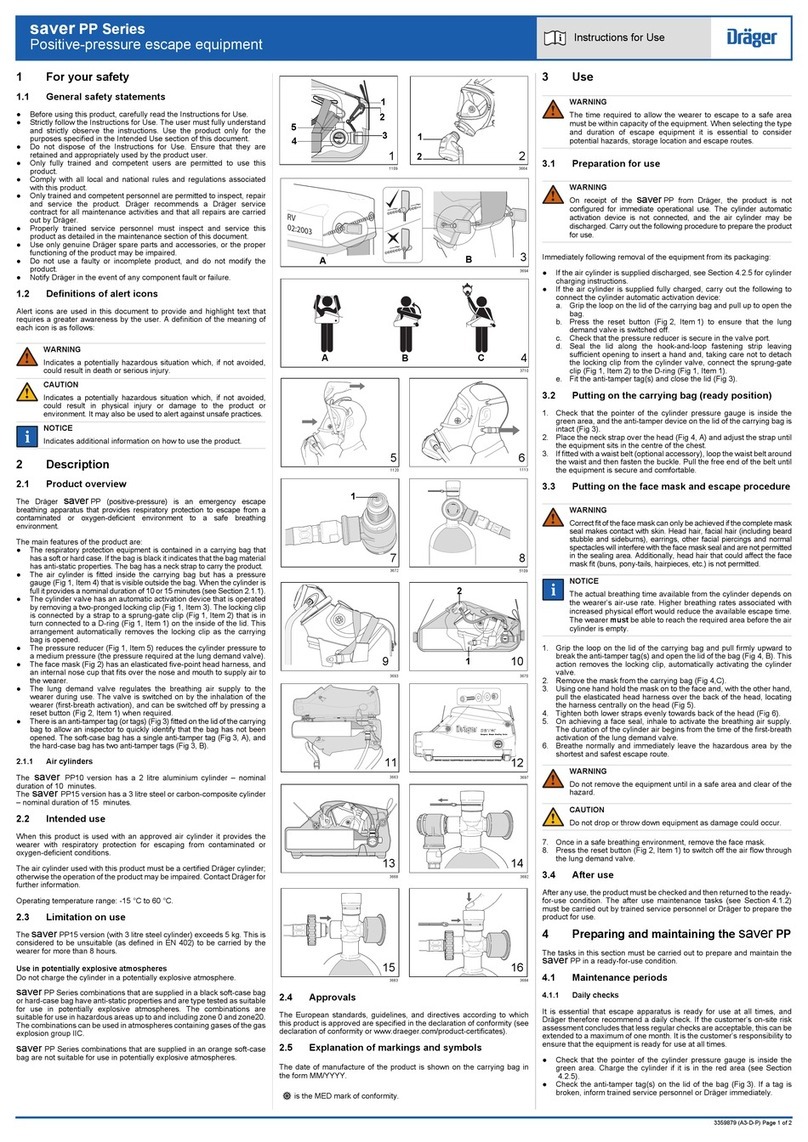
INTRODUCTION
NIOSH APPROVAL INFORMATION CAUTIONS AND
LIMITATIONS
D- Air-line respirators can be used only when the respira-
tors are supplied with respirable air meeting the
requirements of CGA G-7-1 Grade D or higher quality.
E- Use on the pressure gauges and hose lengths speci-
fied in the User’s Instructions.
I- Contains electrical parts which have not been evaluat-
ed as an ignition source in flammable or explosive
atmospheres by MSHA/NIOSH.
J- Failureto properly use and maintain this product could
result in injury or death.
M- All approved respirators shall be selected, fitted, used
and maintained in accordance with MSHA, OSHA and
other applicable regulations.
N- Never substitute, modify,add or omit parts. Use only
exact replacement parts in the configuration as speci-
fied by the manufacturer.
O- Refer to Users Instructions, and/or maintenance man-
uals for information on use and maintenance of these
respirators.
S- Special or critical Users Instructions and/or specific
use limitations apply. Refer to user instructions before
donning.
S-SPECIAL OR CRITICAL USERS INSTRUCTIONS
Approved for use at temperatures above -25°F. Approved
only when the compressed-air container is fully charged
with air meeting the requirements of the Compressed Gas
Association Specification G-7 for quality verification level
(grade) D air or equivalent specifications. The cylinder
shall meet applicable DOT specifications.
Use with adequate skin protection when wornin gases
and vapors that poison by skin absorption (for example:
hydrocyanic-acid gas).
In making renewals or repairs, parts identical with those
furnished by the manufacturer under the pertinent
approval shall be maintained.
NIOSH Approval Information is included as a supplement
to these instructions (P/N 10039170).
IMPORTANT NOTICE FOR RESPIRATORYPROTEC-
TION PROGRAM ADMINISTRATORS
1. An adequate respiratory protection program must
include knowledge of hazards, hazard assessment,
selection of proper respiratory protective equipment,
instruction and training in the use of equipment,
inspection and maintenance of equipment, and med-
ical surveillance. [See OSHA regulations, Title 29 CFR,
Part1910. 134, SubpartI, Par.1910. 134 (c).]
2. This SCBA may be used only after proper instruction
and training in its use as specified in NFPA-1500 and
OSHA regulations Title 29 CFR, Part 1910. 134,
Subpart1, Par.1910. 134 (b) (3).
3. This SCBA must be secured by a positive mechanical
means if stowed within an enclosed seating area of
fire department vehicles, or in a compartment with a
positive latching door. The method of holding the
SCBA in place must be designed to minimize injury to
persons in the vehicle in the event of accident, rapid
deceleration, or acceleration.
4. Do not mark the SCBA, i.e., with stamps, labels, paint
or other method. Use of such markings may interfere
with apparatus use or may constitute a flammability
hazard.
5. Be sure that no other equipment interferes with the
SCBA facial seal, or with the users hands, or other
necessary means of mobility.
For more information on self-contained breathing appara-
tus use and performance standards, please consult the
following publications:
2
TAL 5010 (L) Rev. 3 - 10037469
TABLE OF CONTENTS
Introduction .............................................................................................................................................................................2
Description ..............................................................................................................................................................................5
Donning...................................................................................................................................................................................7
Removing the Apparatus ......................................................................................................................................................11
Cold Weather Operation .......................................................................................................................................................13
Cleaning/Disinfecting ............................................................................................................................................................15
Inspections............................................................................................................................................................................17
Functional Tests ....................................................................................................................................................................19
Flow Test/Overhaul Requirements ........................................................................................................................................20
Lifetime Warranty ..................................................................................................................................................................23
